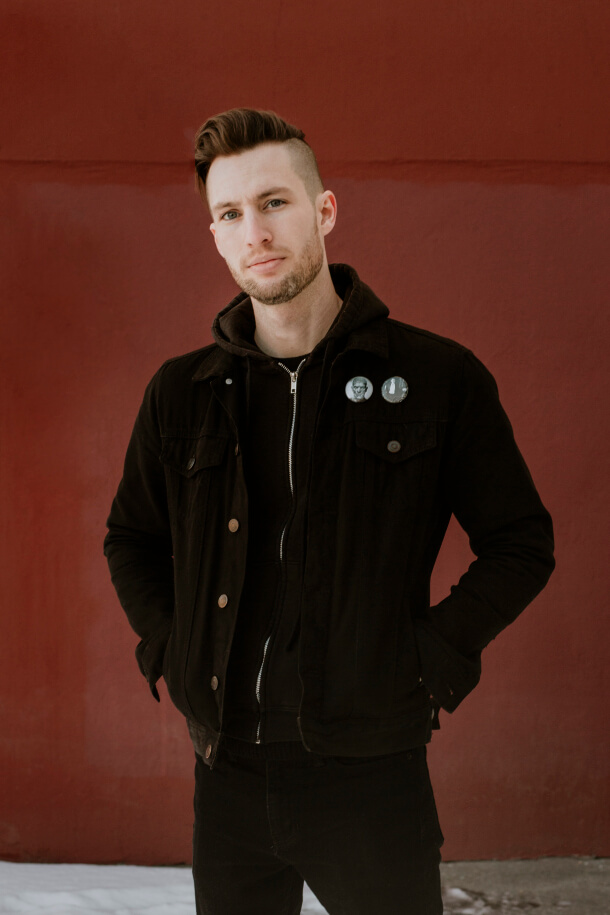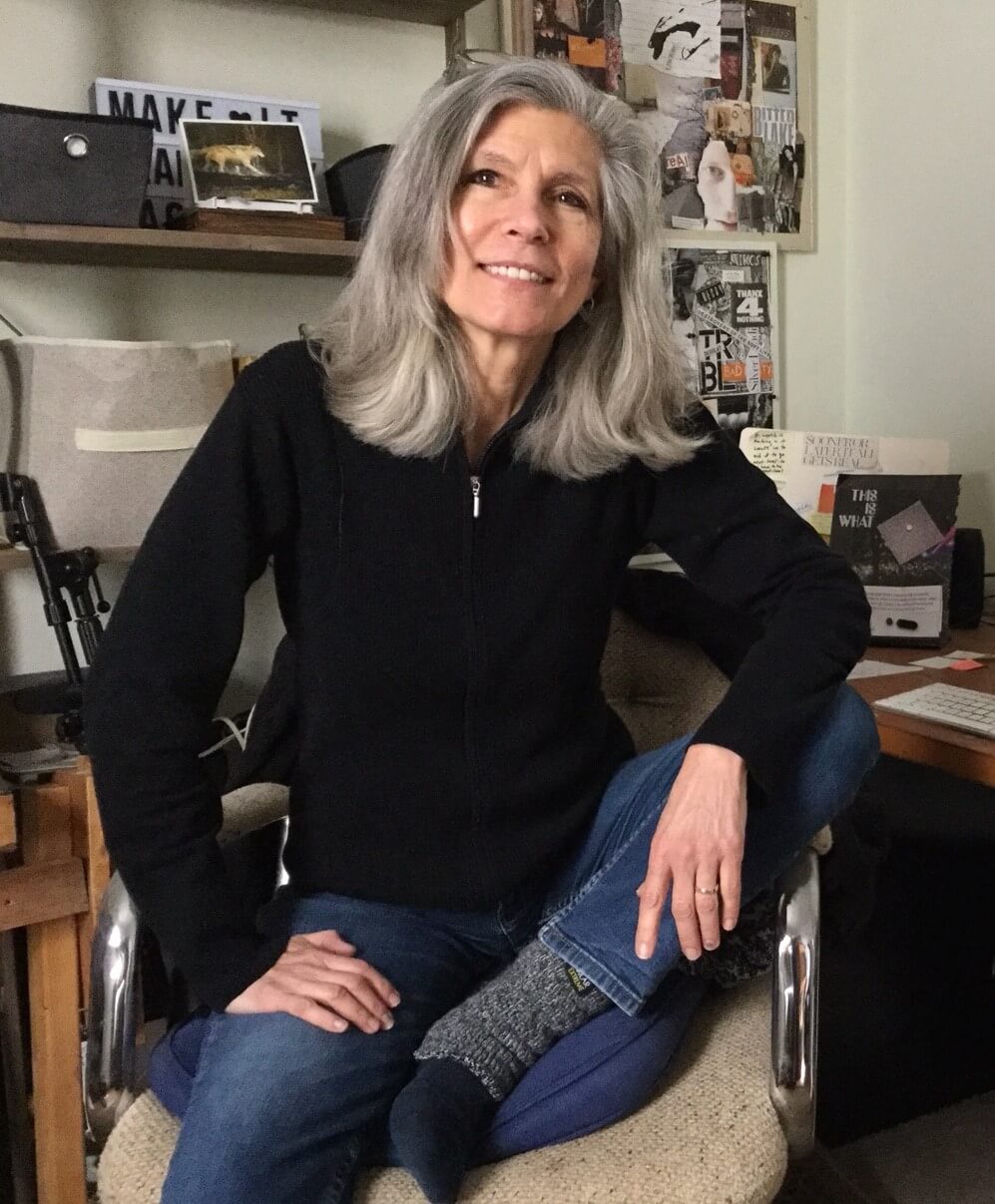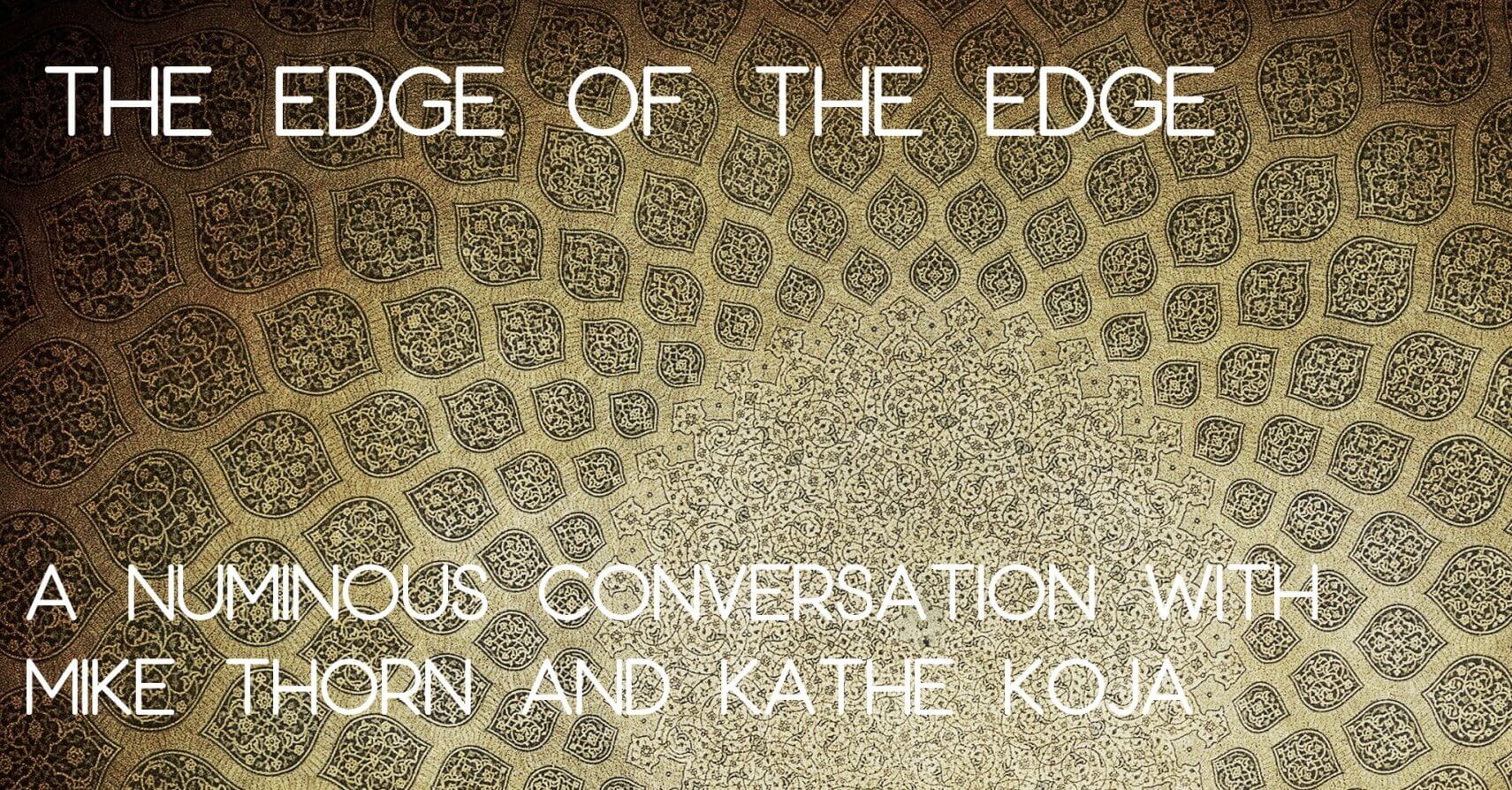
Over the past few years I’ve had the privilege of enjoying an ongoing dialogue with one of my major creative influences, award-winning writer Kathe Koja. Two years ago, she and I discussed genre and process during the virtual launch for my second short story collection, Peel Back and See. Last year, we discussed our work’s relationship with cinema for In Review Online. While brainstorming about topics for future conversations, we decided to pursue the concept of numinosity: its permutations in literature in film and the role it plays in our own creative projects. This article is the result of our email thread on the subject.
Mike Thorn: Since we’re discussing numinous representations in literature, it might be useful to start with some cursory definitions. In The Critique of Pure Reason, Kant argues that noumena can only be described in terms of what human cognition can’t access: the noumenon “can never be thought as an object of the senses.” Schopenhauer rebuts Kant’s idea as contradictory, asserting that Kant poses the self-canceling notion that noumena are “things that we can only think, but are in fact completely problematic, since we do not have the intuition that would give such thought meaning; as a result, the object of that thought would be nothing but an entirely undermined possibility.”
Bataille also wrestles with the limitations of language in Inner Experience, arguing that mystical experiences “are situated alone beyond words and can only be evoked by them.” For German theologian Rudolf Otto, confronting the numinous is an experience of “nothingness before an overpowering, absolute might of some kind” that “first begins to stir in the feeling of ‘something uncanny’, ‘eerie’, or ‘weird.’” Relatedly, Weil and other Christian mystics propose radical asceticism in the name of confronting divinity.
With all this in mind: the numinous is by its very nature something indescribable, and yet your work keeps returning to it, whether it’s via The Cipher’s darkly enigmatic Funhole, or creation-as-escape in Skin (and Blue Mirror, Strange Angels, Velocities, etc.), or nonhuman animal consciousness in straydog, or the boundary-breaking hyper- or extra-reality in Dark Factory. As a writer, how do you approach writing the unwritable?
Kathe Koja: Well, everything can only ever be evoked by words, right, no word is going to fix you a veggie burger, or hold you when you cry, or open your beating heart to the actual air. This is not meant as flip or reductive! because what words can do, what they will do through the participatory action of reading, is lead us to the contemplative edge of an experience of being—and the numinous is arguably the bedrock experience of being (and of nonbeing, transcendence of being)— using that full and conscious act of attention as their vehicle. [Which goes for film too. No film watches us, but in the watching we see.] Not bad for little marks on a screen or paper.
But then as a writer you come up against the question: What words?
You could take the coward’s way out and say something like “no words were adequate for what I saw next,” but sorry, this is our job, to describe. Some old texts define description as “[to] form or trace by motion,” and I love that—the clumsy, serious, ongoing motion of our attempts to trace what is not visible, physical, corporeal, knowable—because an attempt is always humble.
So: what words? How do we write, humbly and accurately, about an experience or state of being that exists not outside our sphere of consciousness, like some big dark sparkling playground, but encompasses us, encloses us more thoroughly and finally than our own skin, our own thoughts? Do we reach for the physical, to describe in bodily sensations what cannot itself be bodied? Do we go the lyric way, the mystic way? Do we use genre as a handrail? irony as a defense? And if we find the words, are they the same words all the time?
My own work does make that attempt, again and again, lately and most directly in Dark Factory and Dark Park, where reality and its boundaries are the terrain. But as ever it’s the characters who matter, whose traversal of that terrain makes the story—Ari who sees the edge of that terrain without ever defining it to himself, Max whose whole being is definition until it isn’t.
Where do you find the numinous in your work, Mike? How do you go about tracing it?
MT: There’s so much to chew on here. First: I just want to say I love how Dark Factory studies these contrasting ways of seeing (or being) via Ari and Max.
Your idea of the “humble attempt” intrinsic to writing resonates with me: fiction is, at its foundation, an effort to make nothing (literally something that doesn’t materially exist) look and feel like something real. In this sense, fiction is an illusion, debatably even a deception. Of course, a work of fiction is never actually nothing; there’s always an overflow of remixed or abstracted extratextual input that becomes the story or the novel—literature, relationships, memories, politics, song lyrics, whatever—but unlike art forms that can more explicitly or tactilely represent those things (whether through painting or filmmaking or sculpture, etc.) fiction is always already bound up in the limits—or the mirage—endemic to words on a page, which signal to referents without literally resembling them. I was discussing this topic with my partner—who’s also a writer—and she mentioned logograms and imagist poetry as modes that focus explicitly on language as a pictorial form. The same could be said for some forms of concrete poetry.
I’m trying my best not to get annoyingly Derridean or something … I’d rather look at fiction. Specifically, thinking about the blank white page reminds me of “The Whiteness of the Whale”, a chapter from Herman Melville’s Moby Dick. Melville writes about whiteness as noumenon: Is it that by its indefiniteness it shadows forth the heartless voids and immensities of the universe, and thus stabs us from behind with the thought of annihilation, when beholding the white depths of the milky way? Or is it, that as in essence whiteness is not so much a color as the visible absence of color; and at the same time the concrete of all colors; is it for these reasons that there is such a dumb blankness, full of meaning, in a wide landscape of snows- a colorless, all-color of atheism from which we shrink?
Seeking to capture the numinous via writing is a pursuit like Ahab’s, a kind of futile obsession, but no less meaningful for its futility. As writers we devise how to best actualize fictions on the blank page, which as Melville describes could be seen as nothing (colorless) or as a kind of unthinkable totality (all-color). By this line of thinking, if we’re to use the term noumena loosely (and why shouldn’t we?) then fiction is fundamentally numinous. We carefully compose, arrange and rearrange words on screens and pages until we get as close as possible to that inaccessible, unreachable something, but text can never actually represent the thing itself (kanji, concrete, and imagism aside). To me, this aspect of fiction is exhilarating and motivating. I’ve never felt I’ve fully, accurately transcribed a mental concept through writing, and that’s one of my key motivations for continuing: maybe I’ll get closer next time, or maybe not, but I’ll keep trying.
I’m always aiming to remove or at least minimize myself from within the tunnel between words and their objects of representation. You asked about tracing the numinous in my own work. The first thing that comes to mind is a scene from Shelter for the Damned where Mark experiences suspended consciousness without body—he can’t escape seeing and perceiving, but he no longer exists; he’s lost all agency. To me, this is an unimaginable horror. I agree with you that the writer’s job is to attempt description, and that’s what I did here: humbly attempted. I’m interested in reflecting content in form, so I wrote much of the novel in deliberately terse, often subjectless sentences to convey Mark’s brokenness and panic.
This topic has me thinking about your new project, Dark Factory, which rethinks the possibilities of “the novel” by expanding out into interactive online components, playlists, in-person events, and a new companion novel, Dark Park. To me, the novel we call Dark Factory contains all these things; it’s not just the words between its two covers or within its ebook file. So, I guess I’m thinking about the novel specifically as a medium. What are its inherent limitations or possibilities in exploring numinous concepts?

KK: Full consciousness without agency = absolute horror. Existential locked-in syndrome.
And I think of Dark Factory/Dark Park as you do, that novel is all its constituent aspects, it’s the narrative, it’s the playlists, the fan art, the scent, the events. Because we can absolutely expand the definition of a novel by utilizing, or at least acknowledging, all those other available narrative tools: if our goal is to actualize that daunting white totality into a work that can offer levels of involvement to its readers—emotionally, artistically, aesthetically—then all tools may be put to use as the narrative suggests or warrants. We experience life in a multiplicity of ways, why not fiction?
And opening the narrative this way also opens the door to creative exchange/collaboration, using the central idea as a pivot-point: what’s real, how do you define reality? And what do you do at the end of the end of the world? The in-person Dark Park launch asked its guests, who attended as personae, that question, and got an amazing pinwheel array of answers (and all of those could have become stories too).
And this is also central to human experience of the numinous—it’s a profoundly individual thing, but it can be shared, it can cross, overcome, any divide of personality, while retaining, maybe even deepening, that individuality. It belongs to the self and to all selves, it’s the opposite, maybe, of that existential locked-in syndrome! because it opens each of us and it opens all of us. Ecstasy is ékstasis, right, the self outside the self, the dancefloor filled with dancers, all one with the beat, but never ceasing to move individually.
And that sharing already belongs to fiction, it’s in the self-expressions of a shared text, people dressing up as favorite characters, creating feasts à la Lord of the Rings, making a Bloomsday pilgrimage—there’s something operating there that transcends the individual experience of the text and recreates it collectively. Physically!
MT: Right! In this way, your work explores (or expresses?) noumena through tangible phenomena—aurally, and through touch and scent, etc. By recontextualizing the novel’s form, you’re finding new modes for describing noumena, beyond the prose-specific approaches we discussed earlier. In this way, Dark Factory feels to me like an extension of your career-long project. Your fiction has always engaged intensely with corporeality and the seemingly endless ways we strive to move beyond the body. To my mind, your books evoke these ideas through form, via your subjectivity-soaked, modernism-dipped prose style.
I remember mentioning to you once that I see a new level of unfettered velocity in your recent writing, very evident in both Christopher Wild and Dark Factory. Those books’ prose lines and plot structures are so blisteringly active that they achieve a breathless, uniquely experiential quality. It makes sense that your next step would be off the written page.
This strikes me as especially interesting when thinking through narrative’s function at the end of the world. The most radical limit-points can, paradoxically, create limitless openings and possibilities for artistic expression. Dark Factory/Dark Park is an intensely sensory project that interrogates this notion: the possibility of something “realer than reality,” in a sense. We’ve been talking a lot about language, but can fiction transcend the body? This might seem like an abstract question, but abstraction can be fun. Please run with it however you see fit!
KK: If we posit that consciousness itself is a manner of fiction, we’re walking well-trodden terrain; if we posit that consciousness can exist independently of a body, then we’re running with ghosts, or in the Matrix. What if a reality exists that contains all these suppositions, like stories in a book, a collection, an endless anthology of consciousness, what if that is reality? Like the Red King’s dream, but if he woke and we were still beside him. Whose story is it then?
For further investigation . . .
Mike’s numinous cinema picks
Passage of Venus (P. J. C. Janssen, 1874)
Film Study (Hans Richter, 1926)
The Blood of a Poet (Jean Cocteau, 1932)
Eaux d’artifice (Kenneth Anger, 1953)
Curse of the Demon (Jacques Tourneur, 1957)
X: The Man with the X-Ray Eyes (Roger Corman, 1963)
Truth and Illusion: An Introduction to Metaphysics (King Vidor, 1964)
2001: A Space Odyssey (Stanley Kubrick, 1968)
Eggshells (Tobe Hooper, 1969)
La Région Centrale (Michael Snow, 1971)
Matrix III (John Whitney Sr., 1972)
Galaxies (Lillian Schwartz, 1974)
White Hole (Toshio Matsumoto, 1979)
Allures (Jordan Belson, 1981)
Spacy (Takashi Ito, 1981)
Koyaanisqatsi (Godfrey Reggio, 1982)
Prince of Darkness (John Carpenter, 1987)
Tabula Rasa (Peter Tscherkassky, 1989)
Stellar (Stan Brakhage, 1993)
Pi (Darren Aronofsky, 1998)
Bright Future (Kiyoshi Kurosawa, 2002)
Youth Without Youth (Francis Ford Coppola, 2007)
Cemetery of Splendor (Apichatpong Weerasethakul, 2015)
Trans/Figure/Ground (Lauren Cook, 2016)
Voyage of Time (Terrence Malick, 2016)
Color Out of Space (Richard Stanley, 2019)
Mike’s numinous book picks
On the Nature of Things, by Lucretius (55 B.C.)
The Marriage of Heaven and Hell, by William Blake (1790)
The World as Will and Representation, Volume I, by Arthur Schopenhauer (1818)
Nature, by Ralph Waldo Emerson (1836)
The Narrative of Arthur Gordon Pym of Nantucket, by Edgar Allan Poe (1838)
Moby-Dick; or, the Whale, by Herman Melville (1851)
Motley Stones, by Adalbert Stifter (1853)
The Illuminations, by Arthur Rimbaud (1875)
Ghost Stories of an Antiquary, by M. R. James (1904)
The Listener and Other Stories, by Algernon Blackwood (1907)
The House on the Borderland, by William Hope Hodgson (1908)
The Breaking Point, by Daphne du Maurier (1922)
At the Mountains of Madness, by H. P. Lovecraft (1931)
Inner Experience, by Georges Bataille (1943)
The Hounds of Tindalos, by Frank Belknap Long (1946)
Gravity and Grace, by Simone Weil (1947)
Hangsaman, by Shirley Jackson (1951)
The Unnamable, by Samuel Beckett (1953)
The Temple of the Golden Pavilion, by Yukio Mishima (1956)
Labyrinths, by Jorge Luis Borges (1962)
Dark Entries, by Robert Aickman (1964)
The Obscene Bird of Night, by José Donoso (1970)
Ceremony, by Leslie Marmon Silko (1977)
The Names, by Don DeLillo (1982)
Songs of a Dead Dreamer, by Thomas Ligotti (1986)
Bad Brains, by Kathe Koja (1992)
Lost Futures, by Lisa Tuttle (1992)
An Episode in the Life of a Landscape Painter, by César Aira (2000)
Antwerp, by Roberto Bolaño (2002)
From a Buick 8, by Stephen King (2002)
After Finitude: An Essay on the Necessity of Contingency, by Quentin Meillassoux (2006)
A Dark Matter, by Peter Straub (2010)
After Life, by Eugene Thacker (2010)
The Wilderness Within, by John Claude Smith (2017)
A Spectral Hue, by Craig Laurence Gidney (2019)
The Seventh Mansion, by Maryse Meijer (2020)
Kathe’s numinous fiction picks
Wuthering Heights, Emily Brontë
The poetry of Emily Dickinson
The poetry of Jalal al-Din Muhammad Rumi
Riddley Walker, Russell Hoban
Climbers, M. John Harrison
“Naples,” Avram Davidson
“The Lady of the House of Love,” Angela Carter
“The Man in the Black Suit,” Stephen King
“Observations About Eggs From the Man Sitting Next to Me on a Flight from Chicago, Illinois to Cedar Rapids, Iowa,” Carmen Maria Machado
Kathe’s bonus soundtrack
The music of Sigur Rós

